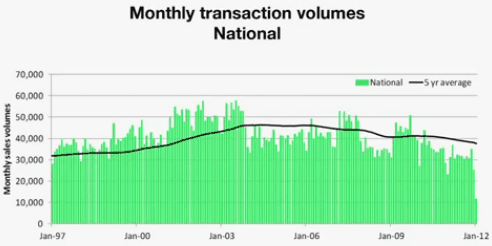By Leith van Onselen
Please find above the RP Data April 2012 Australian Housing Market Update, presented by Tim Lawless, which provides analysis of the Australian housing market at both the national and state levels as at the end of March 2012.
According to the RP Data-Rismark home values index, Australian capital city home prices rose by 0.2% in the month of March 2012 and were flat over the quarter:
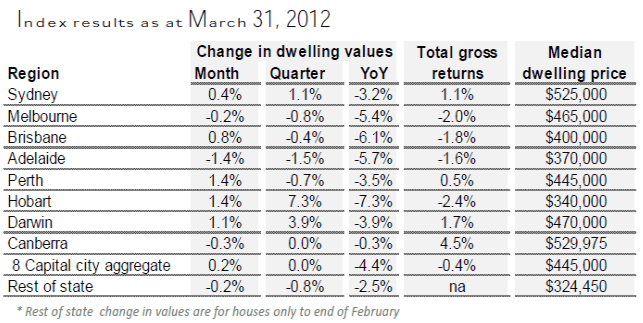
However, as noted previously, the RP Data-Rismark daily index is not seasonally adjusted. And according to the 2010 and 2011 March house price releases from RP Data-Rismark (see here and here), the seasonally adjusted result was between -0.2% and -0.3% lower than the unadjusted (non-seasonally adjusted) figure. This implies that Australian dwelling values typically rise during the month of March and that the 0.2% rise in March 2012 was actually ‘flat’ in seasonally adjusted terms.
Below are the key charts extracted from the above video at the national level.
First, monthly housing transactions volumes, which are current to January 2012. Note the sharp decline in transaction volumes in December and January. While part of this decline is due to seasonality, the declines are clearly far greater than previous years. Our stamp duty dependent state governments should beware!
Next, the number of homes for sale, while slightly below that of November 2011, remains highly elevated, with around double the number of homes for sale currently compared to early 2007:
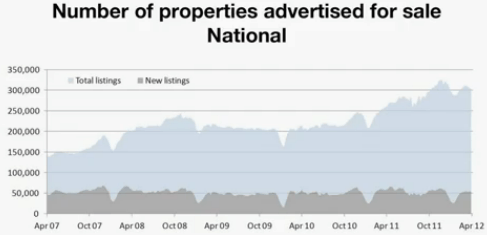
Auction clearance rates improved in March 2012, but remain at around the 50% level, which is still relatively low compared to 2009 and 2010:
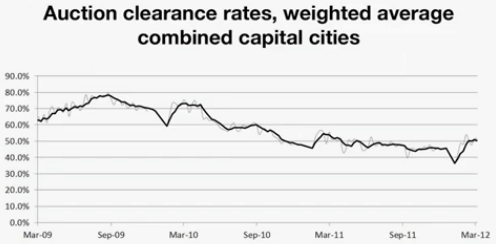
Finally, the level of vendor discounting – the discount between the average asking price and the average selling price – also remains quite elevated (-7.4% in February), but below the peak levels reached in the wake of the global financial crisis and mid last year:
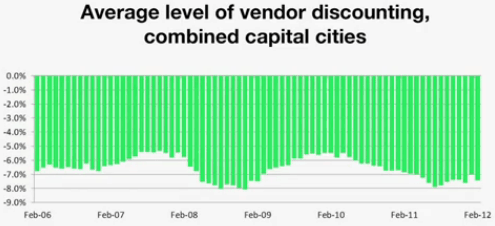
Below are RP Data tables summarising the situation at the capital city level.
First, Australia’s largest city – Sydney – which has arguably the most resilient housing market in the nation:
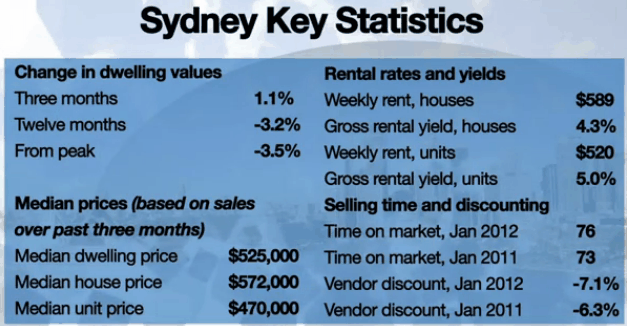
And Australia’s second largest city – Melbourne – where gross rental yields are the lowest in the nation and home prices are sliding:
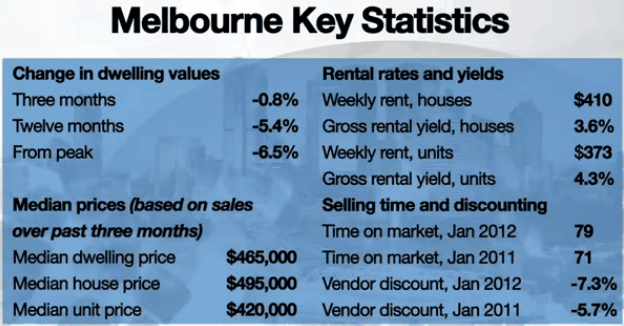
Next, Australia’s third largest capital city – Brisbane – where the peak-to-trough decline in home prices are approaching -11%:
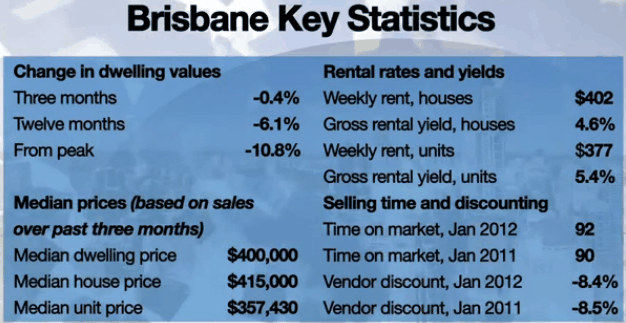
And Australia’ resources capital and fourth largest city – Perth – where prices rebounded by 1.4% in the month of March 2012, but are still -7.1% lower than their peak:
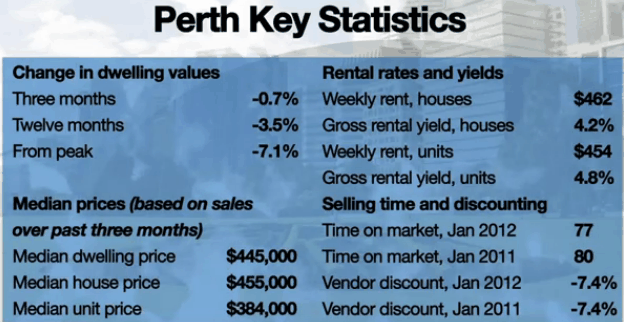
Prices in Adelaide – Australia’s fifth largest city – appear to be weakening fast, down -1.4% in March 2012 and -5.8% below their peak:
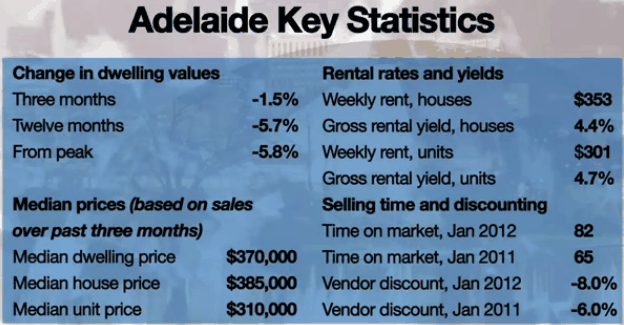
And Hobart – capital to Australia’s smallest state Tasmania – where prices apparently rebounded by 7.3% in the quarter, but are down -7.3% since their peak. The average selling time has also ballooned to above 100 days:
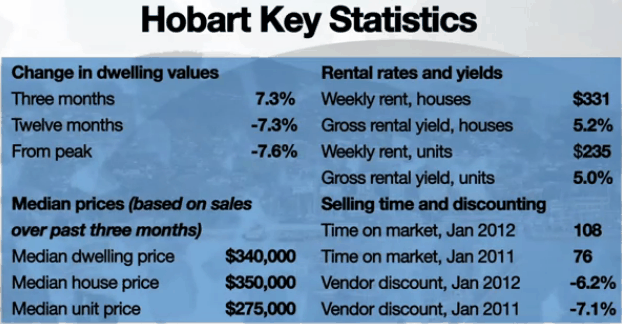
Finally, Australia’s territory capitals – Darwin and Canberra -which are a mixed bag:
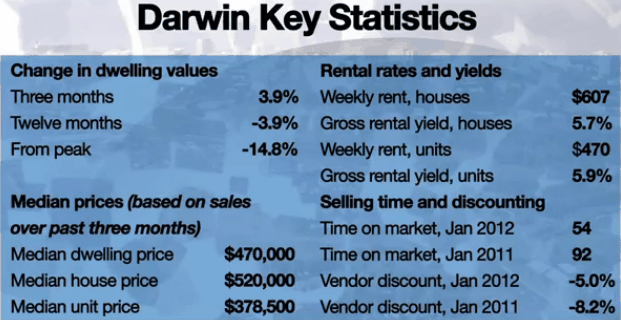
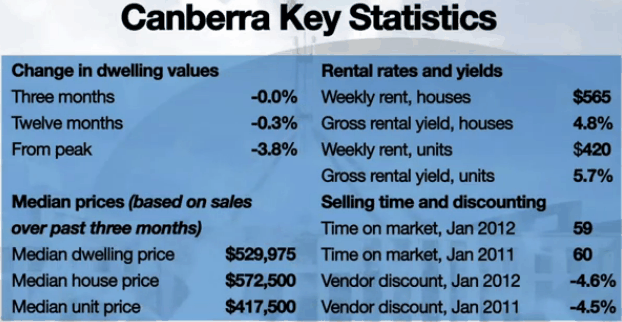
RP Data’s Tim Lawless sees Australian home prices continuing to stabilise, with potential for further capital appreciation in the event that the Reserve Bank of Australia drops rates significantly. This view is broadly consistent with his RP Data colleague, Cameron Kusher’s, view that Australian home prices will, “at best”, track inflation in 2012.
For me, the key chart in the video presentation is the one showing the number of housing finance commitments (excluding refinancings) tracking near 15-year lows:
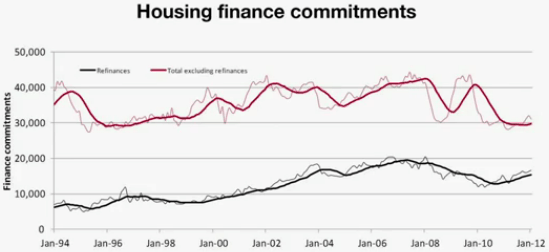
Until we experience a sustained pick-up in new mortgages, the Australian housing market is likely to remain in a funk.

